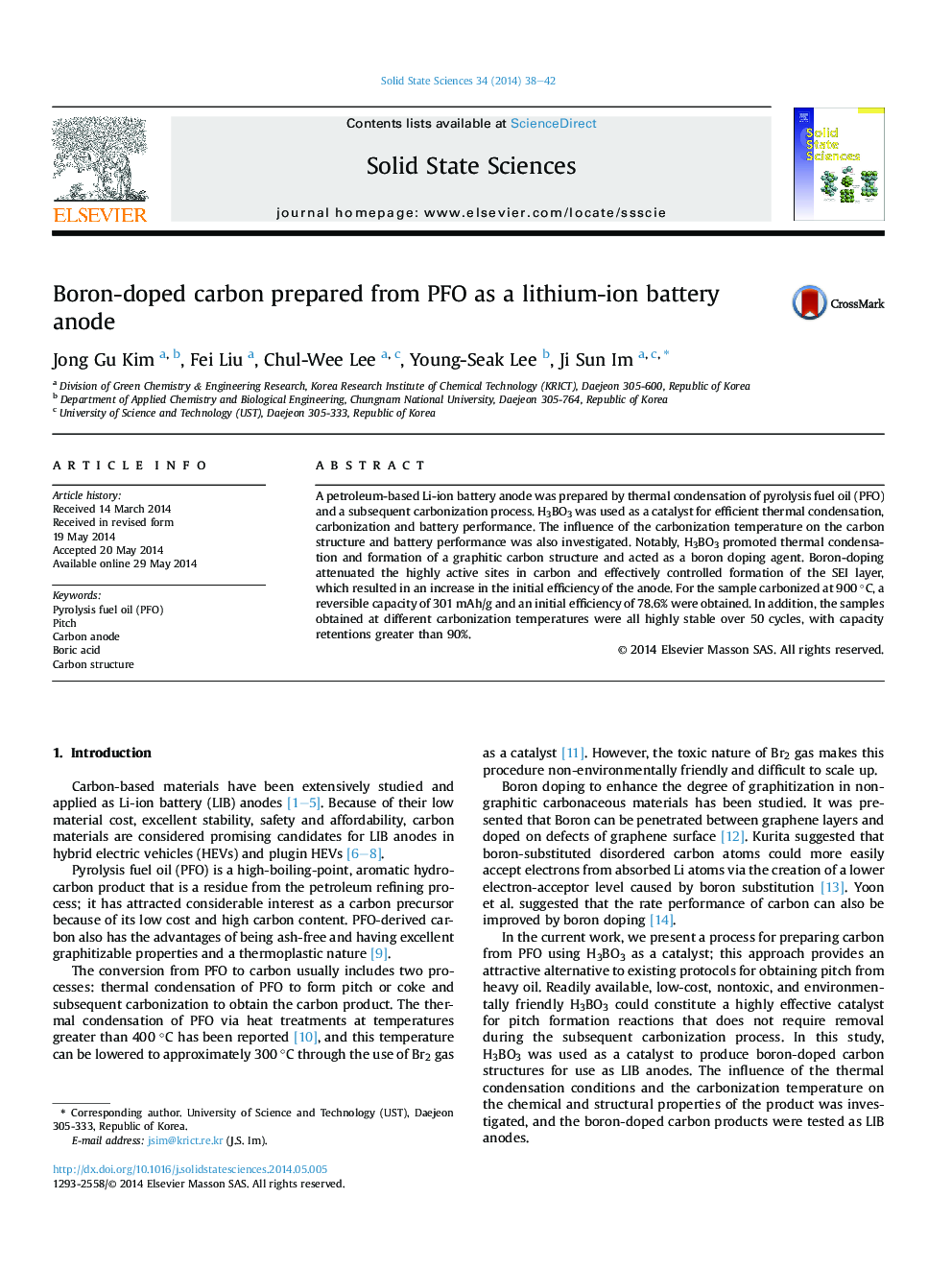| Article ID | Journal | Published Year | Pages | File Type |
|---|---|---|---|---|
| 1504305 | Solid State Sciences | 2014 | 5 Pages |
•Introducing the catalyst (H3BO3) improved the yield of pitch over 10%.•B-doping attenuated the active sites and effectively controlled the SEI layer.•The catalyst resulted in an increase in the initial efficiency of the anode.
A petroleum-based Li-ion battery anode was prepared by thermal condensation of pyrolysis fuel oil (PFO) and a subsequent carbonization process. H3BO3 was used as a catalyst for efficient thermal condensation, carbonization and battery performance. The influence of the carbonization temperature on the carbon structure and battery performance was also investigated. Notably, H3BO3 promoted thermal condensation and formation of a graphitic carbon structure and acted as a boron doping agent. Boron-doping attenuated the highly active sites in carbon and effectively controlled formation of the SEI layer, which resulted in an increase in the initial efficiency of the anode. For the sample carbonized at 900 °C, a reversible capacity of 301 mAh/g and an initial efficiency of 78.6% were obtained. In addition, the samples obtained at different carbonization temperatures were all highly stable over 50 cycles, with capacity retentions greater than 90%.
Graphical abstractFigure optionsDownload full-size imageDownload as PowerPoint slide
